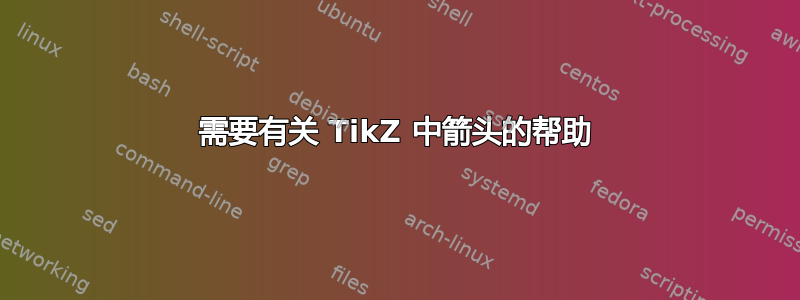
我需要一个看起来像这样的箭头图:
我为此编写的乳胶代码是:
\documentclass{article}
\usepackage{tikz}
\usetikzlibrary{shapes,arrows.meta,positioning}
\begin{document}
\begin{tikzpicture}
\centering
\node[ellipse,draw,minimum size=2cm,text centered,text width=0.15\textwidth] (a) {Fuzzy regular open};
\node[ellipse,draw,minimum size=2cm] at (6,6) (b) {Fuzzy open};
\node[ellipse,draw,minimum size=2cm] at (12,0) (c) {Fuzzy $\gamma^*$-open};
\node[ellipse,draw,minimum size=2cm,text centered,text width=0.15\textwidth] at (9,-6) (d) {Fuzzy semi $\delta$-open};
\node[ellipse,draw,minimum size=2cm] at (3,-6) (e) {Fuzzy $\delta$-open};
\draw[->] (a)--(b);
%\draw[->] (b)--(a);
\draw[<->] (b)--(c);
\draw[<->] (c)--(d);
\draw[->] (e)--(d);
%\draw[->] (d)--(e);
\draw[->] (e)--(a);
%\draw[->] (a)--(e);
\draw[<->] (a)--(c);
\draw[->] (e)--(b);
%\draw[->] (b)--(e);
\draw[<->] (a)--(d);
\draw[<->] (c)--(e);
\draw[<->] (a)--(d);
\end{tikzpicture}
\end{document}
这是输出:
节点没问题,但我在箭头方面遇到了困难。我还希望箭头比现在大一点。请帮我修复箭头,使它们像第一张图片中的箭头一样。
答案1
虽然这不是最终的图片,但我认为它包含了您想要的所有元素。
\documentclass{article}
\usepackage{tikz}
\usetikzlibrary{shapes,arrows.meta,positioning}
\begin{document}
\begin{tikzpicture}[
>={Straight Barb[scale=3]}, % <--- added
tick/.style={draw,minimum width=0pt,minimum height=3ex,inner sep=0pt,sloped}, % <--- added
]
\centering
\node[ellipse,draw,minimum size=2cm,text centered,text width=0.15\textwidth] (a) {Fuzzy regular open};
\node[ellipse,draw,minimum size=2cm] at (6,6) (b) {Fuzzy open};
\node[ellipse,draw,minimum size=2cm] at (12,0) (c) {Fuzzy $\gamma^*$-open};
\node[ellipse,draw,minimum size=2cm,text centered,text width=0.15\textwidth] at (9,-6) (d) {Fuzzy semi $\delta$-open};
\node[ellipse,draw,minimum size=2cm] at (3,-6) (e) {Fuzzy $\delta$-open};
\draw[->] (a.80)--(b.200); % <--- modified
\draw[->] (b.230)-- node[pos=0.5,tick]{} (a.40); % <--- modified
\draw[<->] (b)--(c);
\draw[<->] (c)--(d);
\draw[->] (e)--(d);
%\draw[->] (d)--(e);
\draw[->] (e)--(a);
%\draw[->] (a)--(e);
\draw[<->] (a)--(c);
\draw[->] (e)--(b);
%\draw[->] (b)--(e);
\draw[<->] (a)--(d);
\draw[<->] (c)--(e);
\draw[<->] (a)--(d);
\end{tikzpicture}
\end{document}
答案2
使用信息 Ti钾Z 库arrows.meta(用于箭头)、quotes(用于标记线)和shapes.geometric(用于节点定位),节点边的通用样式,其中有两条来自节点的边,它们的开始和停止由试验定义:
\documentclass[border=3.141592]{standalone}
%\documentclass{article}
\usepackage{tikz}
\usetikzlibrary{arrows.meta,
quotes,
shapes.geometric}
\begin{document}
\begin{tikzpicture}[
> = {Straight Barb[line width=0.6pt, angle=60:3pt 4]},
E/.style = {ellipse, draw, semithick,
text width=5.5em, inner ysep=2pt, inner xsep=-3pt,
align=center, font=\small\linespread{0.84}\selectfont},
every edge quotes/.append style = {font=\footnotesize,
anchor=center,sloped}
]
\node (P) [regular polygon,
regular polygon sides=5,
minimum size =66mm] {};
%
\node[E] (e1) at (P.corner 1) {Fuzzy\\ open};
\node[E] (e2) at (P.corner 2) {Fuzzy regular open};
\node[E] (e3) at (P.corner 3) {Fuzzy\\ $\delta$-open};
\node[E] (e4) at (P.corner 4) {Fuzzy semi $\delta$-open}; % d
\node[E] (e5) at (P.corner 5) {Fuzzy $\gamma^*$-open}; % c
%
\path[<->]
(e1) edge["$\mid$"] (e5)
(e1.310) edge["$\mid$"] (e4)
(e2) edge["$\mid$"] (e5)
(e4) edge["$\mid$"] (e5);
\path[->]
(e1.210) edge["$\mid$"] (e2.50)
(e1.255) edge["$\mid$"] (e3.80)
(e2.260) edge["$\mid$"] (e3.135)
(e3.7) edge (e4.173);
\path[<-]
(e1.230) edge (e2.30)
(e1.280) edge (e3.55)
(e2.285) edge (e3.115)
(e3.353) edge["$\mid$"] (e4.187);
\end{tikzpicture}
\end{document}






